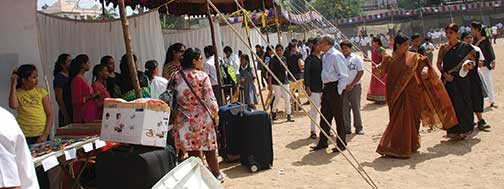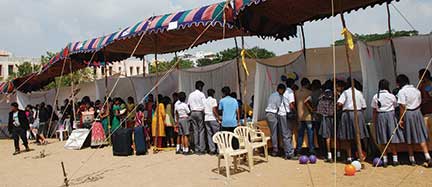C Sudha Rani
Economy, economics, reforms, liberalization, privatization, and globalization – these are terms that are introduced to children in high school. Agreed, these are loaded words that younger children may not be able to make much meaning of, but it is necessary that we prepare them to understand and apply these words when they are in high school. So how do we do this? The answer is financial literacy. Financial literacy may not be part of the curriculum for young children, but introducing it, in my opinion, will help children understand the basic concepts of saving and spending early on in life making them responsible adults.
 How to introduce financial literacy to your students
How to introduce financial literacy to your students
Short stories that send a message to children to be careful with the money in their hands are a good way to start. Such stories will help them understand their needs and prioritize them accordingly. Organizing a mobile vegetable market, a stationery store, or a food court, is another fun way to get children to discuss, think, and talk about money.
At the middle school level students can be encouraged to perform skits around economic concepts such as different types of occupations. These skits can be used to introduce students to the real meaning of economic and non-economic activities. What are the differences between the two? Can they categorize the different occupations that they come across in their daily lives as belonging to one or the other? What are the three sectors that the economic activities can be divided into? Let children talk to family and elders and find out. Get the children to do a small survey in their area among different people including street vendors to understand their standard of living and how it is directly dependent on the income earned. Let them accompany their parents to banks, fill out demand draft forms or cash withdrawal slips.
At the high school level, discussions in the context of real life situations are a good way to get students to understand money. What does the term ‘market’ mean to them? How many types of shops have they been to? What differences did they observe amongst the various shops? How do demand and supply play a role in deciding the kind of market it is?
At the senior secondary level, financial literacy is introduced as financial management as students begin studying microeconomics and macroeconomics. Regular perusal of the newspapers and reading about the trends in the market help students assimilate the subject at this stage.
 Financial literacy has to be made mandatory in the school curriculum across boards so that every child is equipped with the knowledge and skills necessary to step out into the world tomorrow. As teachers and facilitators let us put in our efforts to enable them to become responsible citizens.
Financial literacy has to be made mandatory in the school curriculum across boards so that every child is equipped with the knowledge and skills necessary to step out into the world tomorrow. As teachers and facilitators let us put in our efforts to enable them to become responsible citizens.
Diwali Mela in school
Projects are a good way of testing whether students have imbibed what they were taught in class. I gave my students of class XI a project to work on – organizing a Diwali Mela in school. After discussions, counting the money they collected and the manpower they had, the students decided that the Mela would have stalls showcasing different aspects of the festival – colourful diyas, homemade traditional sweets, dances, and songs. The mela was to be an eco-friendly one so there was no display of firecrackers or junk food. Parents and the school staff were invited to visit the mela. The mela was a success. The students in fact earned a profit selling some of the items displayed in the various stalls. The profit they earned is being utilized to install solar panels in the school.
Everything from planning the venue, time, tickets, types of stalls, organizing the entertainment, deciding the chief guest, and finally what should be done with the profit was planned meticulously by division of labour, which is something that students are taught as part of the principles of management. This project gave them an insight into business studies and economics. It was a hands-on learning experience for budding managers in the fields of accounting and marketing.
The author is a teacher at Bharatiya Vidya Bhavan, Jubilee Hills, Hyderabad. She can be reached at csr.create@gmail.com.
